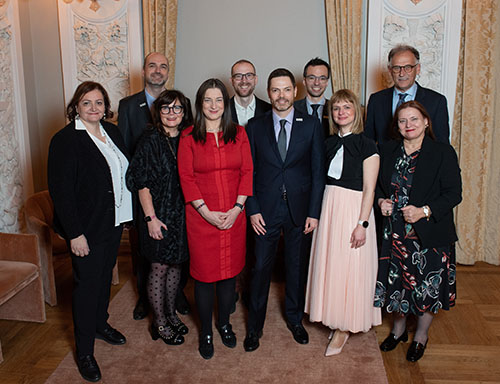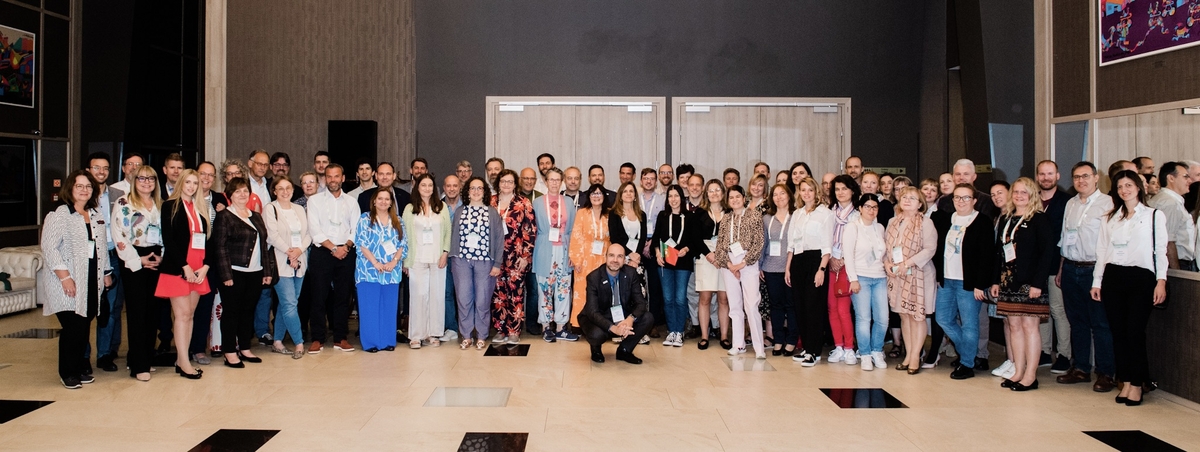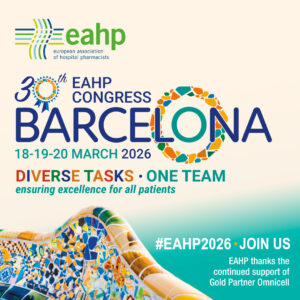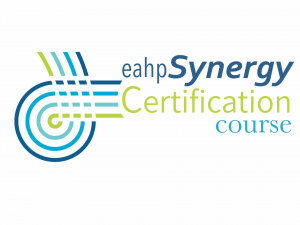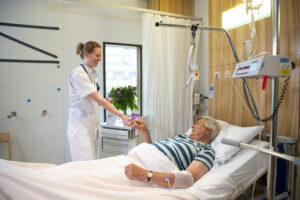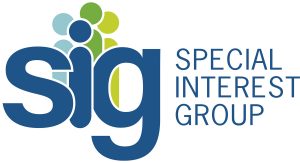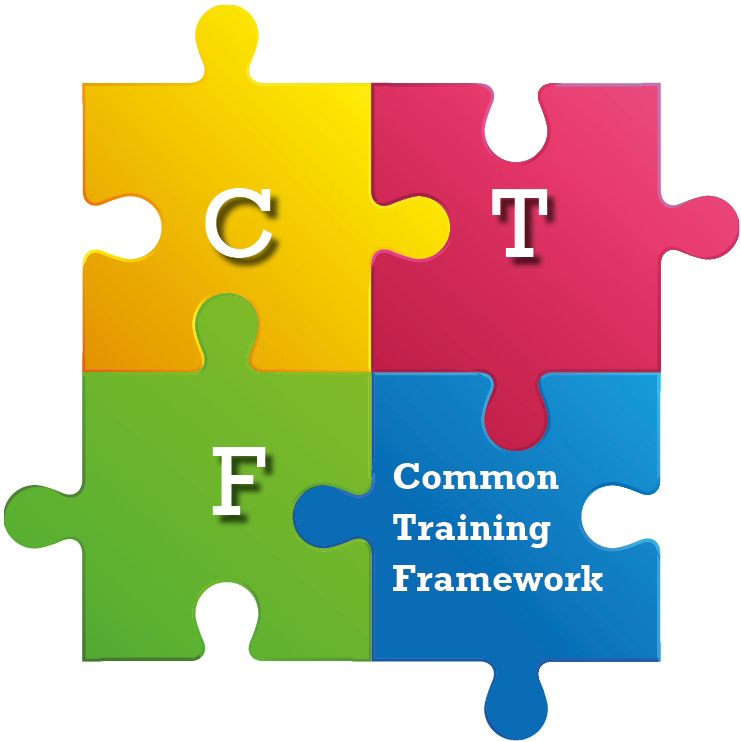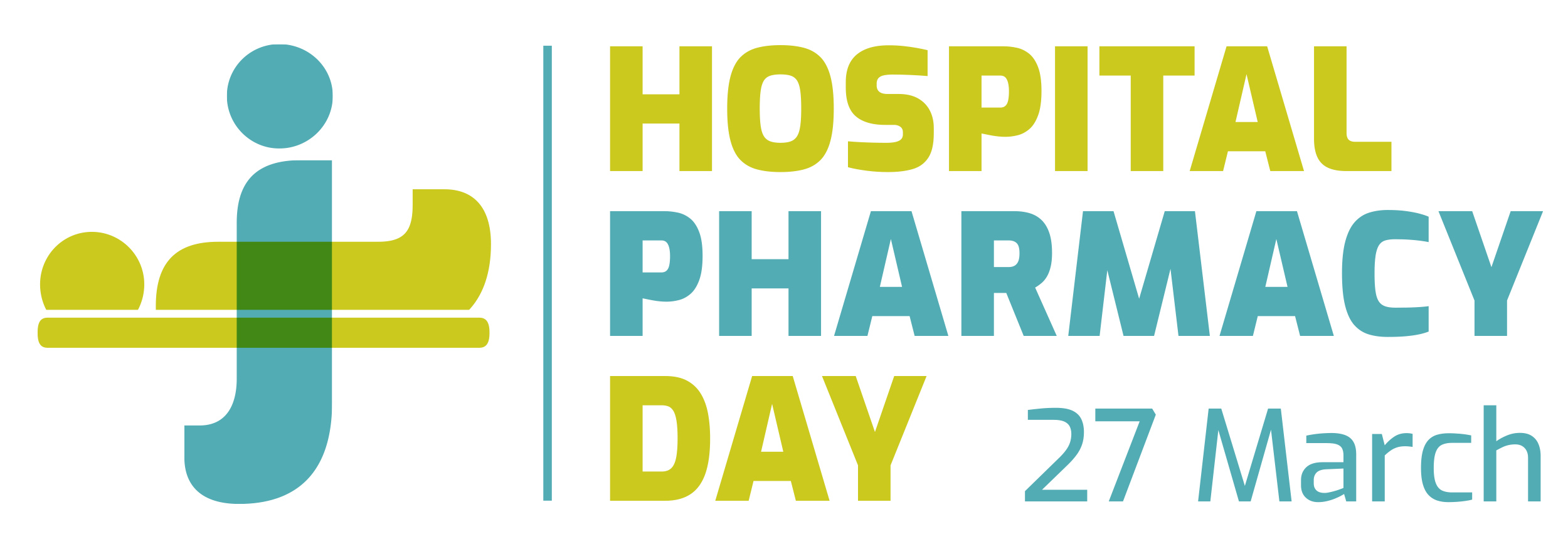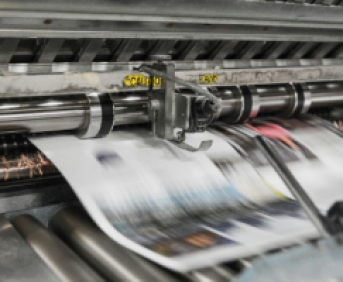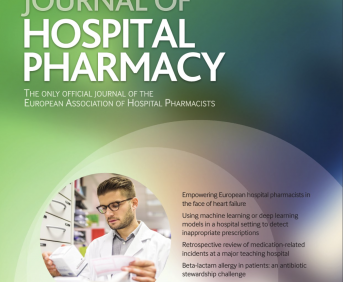IMPLEMENTATION OF A BIGDATA ANALYSIS PROGRAM FOR STOCK MANAGEMENT IN A PHARMACY SERVICE
European Statement
Clinical Pharmacy Services
Author(s)
LUCÍA SOPENA, VICENTE GIMENO, OLGA PEREIRA, Mª ANGELES ALLENDE, RAQUEL FRESQUET, RAQUEL GRACIA, BEATRIZ BONAGA, MERCEDES ARENERE, TRÁNSITO SALVADOR, ALBERTO FRUTOS
Why was it done?
The growing technological development of pharmacy services involves the coexistence of traditional warehouses with automated medicine dispensing systems controlled by different computer programs. The information was splitted into different systems and databases giving rise to possible errors due to the greater complexity.
This is a threat but also an opportunity for the hospital pharmacist to lead the development, review, and improvement of medicine use processes and the use of health technologies.
KNIME data analysis covered the need of our Pharmacy Service to blend data from any source in a single file simplifying the process.
What was done?
The Pharmacy Service of a tertiary-level hospital has implemented Konstanz Information Miner (KNIME) data analysis and treatment program to optimize the stock management of several medicines.
How was it done?
An initial algorithm was designed by the union of 7 files and can be executed at any time to obtain the updated data.
What has been achieved?
This file provides up-to-date information about the stocks, stock-outs, consumptions, orders and purchasing data of all medicines (average price, laboratory, date and number of orders, units to be received).
In addition, KNIME calculated the coverage time from consumption, and the current stock in the warehouses, obtaining a global vision of highest turnaround pharmaceuticals drugs.
The program also allows linking and merging data of the list for shortages of medicines, supply disruptions and restocking time provided by the Spanish Agency of Medicines and Medical Devices (AEMPS).
KNIME program has been especially important in our Pharmacy Service during the pandemic caused by severe acute respiratory syndrome coronavirus 2 (SARS-CoV-2). Big data analysis has allowed the hospital pharmacist to anticipate missing specialties and to make a rapid response in ensuring the availability of Essential Medicines List (EML) composed by 75 proposed by AEMPS and 138 by our hospital (e.g. antiinfectives, analgesics, muscle relaxants, anesthetics).
What next?
KNIME is a tool that could be successfully implemented and appropriately generalized as recommended to all Pharmacy Services that use different data sources, and want to have a generalized view of the information.
KNIME represents an advance in the stock and stockpiling management of medicines specialties to work more efficiently, which improve patient care and safety.
Which analytical method for parenteral nutrition mixtures dosing to choose? A regional comparative study
European Statement
Production and Compounding
Author(s)
Joan-Candy MABIN , Aïssé DIALLO, Hortense LANNELUC-BEAUJARD, Xavier DEVIOT
Why was it done?
The aim of this work is to find a cheaper alternative, reducing the analysis duration and allowing the pharmacy to be laboratory independent.
What was done?
The opening of the production unit (PU) leads to reorganize the parenteral nutrition mixtures (PNM) dosing. Primarily carried out in the biochemistry laboratory of our hospital, potentiometry and colorimetry analysis were long (more than an hour) and costly. PNM composition accelerates the aging of one of the device components that costs 1400 euros and have to be changed every 3 weeks, raising the total around 24300 euros per year only for this component.
How was it done?
Hospitals producing PNM in the region were identified and approached. They were asked about the type of dosed elements, the analysis method and the equipment used, about the analysis duration and localization (laboratory or pharmacy departments) and their overall cost estimation.
What has been achieved?
Five hospitals with different dosing equipment answered. Four of them analyze cations: calcium, magnesium, sodium and potassium by capillary electrophoresis, potentiometry or spectrometry, three of them analyze glucose by chromatography or colorimetry, and two of them determine osmolarity of the PNM mixtures. Dosages are performed by the pharmacy department in three PU where technician are required. Results are provided in about an hour when the activity depends on the laboratory and around five to ten minutes when it is managed by the pharmacy department. The average cost to purchase the equipment for each hospital was around 50000 euros (without the associated materials and the labour cost).
What next?
To conclude, no hospital interviewed can be a model because of either the high costs or the unadapted equipment size to the scale of the room of our PU. Nevertheless, during discussions, an equipment that might answer our needs was suggested, because no technician is needed for analysis, and it is described simple and easy to use. The manufacturer has been reached out asking for demonstration and information before any purchase. If accepted, the device will be qualified before going into production.
Implementation of dose banding strategy for Daptomycin
European Statement
Production and Compounding
Author(s)
Marta García-Queiruga, Begoña Feal-Cortizas, José María Gutiérrez-Urbón, Andrea Luaces-Rodríguez, Alejandro Martínez-Pradeda, Sandra Rotea-Salvo, Carla Fernandez-Oliveira, Víctor Giménez-Arufe, Luis Margusino-Framiñán, Isabel Martín-Herranz
Why was it done?
Daptomycin is an intravenous antibiotic usually prepared in Hospital Pharmacy services. Normally it is dosed based on body weight, which requires each intravenous mixture to be prepared in an individual manner for each patient. This might lead to an increased assistance workload in elaboration areas, a higher number of errors in the preparation and high costs due to waste materials generated during preparation.
What was done?
The aim of this study is to describe the preparation of intravenous daptomycin by dose banding, a system in which daptomycin doses are rounded up or down in order to standardize and protocolize the preparation of intravenous mixtures as much as possible.
How was it done?
In order to improve this situation, dose banding strategy was implemented in February 2019: the obtained final dose was rounded in such a way that only mixtures of 500, 700 and 850 mg were prepared (in agreement with Hospital Pharmacy and Infectious and Microbiology medical teams) , following this scheme:
PRESCRIBED DOSE PREPARED DOSE
< 400 mg Prescribed dose (individualized)
400–599 mg 500 mg
≥600–799 mg 700 mg
≥800 mg 850 mg
What has been achieved?
Previous year before starting dose banding strategy (2018), 5493 individualized doses of daptomycin were prepared for 437 patients in our Pharmacy service. Between June 2020 and June 2021, 2680, 2555 and 997 units of daptomycin 500, 700 and 850 mg, respectively, were prepared for 360 patients. Batches of standardized doses were prepared in advance and kept refrigerated (stability of 10 days in 100 ml of physiological saline) until dispensation. In addition, during the same period, 15 patients (4 from pediatrics) received 209 individualized doses (3.2% of the total doses) due to their low body weight.
What next?
This strategy might decrease the number of errors in preparation and reduce processing times, which is essential since early appropriate antibiotic treatment in severe infection has been associated with better outcomes. Dose banding model could be extrapolated to other drugs with good physical, medical and microbiological stability in dilution, which are frequently prescribed and when few dose bands can cover most of the prescriptions.
Design and dissemination of infographics to improve safety in drug handling
European Statement
Patient Safety and Quality Assurance
Author(s)
Paula Hernando Martínez, María Antonia Meroño Saura, Caridad Marti Gil, Lidia Martínez Valdevieso, Jaime Fernández-Bravo Rodrigo, Dolores Barreda Hernández
Why was it done?
There is a wide bibliography on how human errors related to drugs put the patient’s health at risk. Drug preparation and administration errors, dose calculation errors, lack of knowledge about drugs or interactions, to name but a few. There must be protocols to ensure that drugs are safe for patients, including procedures which professionals should fulfill in order to reduce those errors in processes and guarantee, in such cases, that they will not have adverse effects on patients.
What was done?
Development of infographics for assembling drugs which are susceptible to a higher rate of errors in their preparation and administration to hospitalized patients.
How was it done?
During September 2021, a working group was formed in the pharmacy department (PD). Through the nominal group technique, the design and content of drug infographics was proposed as a solution to the raised problem. Subsequently, a bibliographic research of susceptible drugs to human errors during administration or preparation and those which requiring special handling was reviewed through the list of high-alert medication from National Institute for the Safe Use of Medications website and NIOSH list of hazardous drugs. To this end, the PD databases were analysed, obtaining the drugs that required the greatest number of pharmacotherapeutic consultations made by nursing staff on drug administration and recommendations made during pharmaceutical validation.
What has been achieved?
An infographic model has been designed which includes the description of the drug (name of drug, excipients, dose, pharmaceutical form, dosage regimen, route of administration, concentration), the preparation and administration protocol (reconstitution, dilution, infusion rate, premedication), observations (maximum doses, conditioning, incompatibilities, alerts) and storage conditions (conservation and stability). Infographics on dantrolene, intravenous phenytoin solution, intravenous nimodipine solution and potassium chloride solutions are currently being distributed. These documents are available at the nursing controls and on the hospital’s internal website.
What next?
To increase the availability of drug’s infographics and to update those that have already been developed when necessary. In addition, from the PD, the preparation of administration kits for the solicited drugs is proposed so as to ensure that all the necessary materials for the preparation and administration are included along with the corresponding drug and infographic.
Homemade personalized 3D printed guides for mandibular reconstruction – A pharmacist feedback
European Statement
Production and Compounding
Author(s)
Quentin Misandeau, Romain Bosc, Muriel Paul, Valérie Archer, Lionel Tortolano
Why was it done?
The plastic surgery department bought two 3D printers in order to design and create custom-made medical devices. The main objective was to decrease the delay between mandibular cancer diagnosis and the surgery. The delays of production in the medical device manufacturers may exceed 2 weeks. Those delays are considered as a lost of chance for the patients.
What was done?
We helped our surgeons to secured the production procedure and reduce the risks for patients. We create a management quality system for supply, production, sterilization and using of our homemade personalized 3D printed guides.
How was it done?
First, we created a task force of pharmacist and surgeons.
The main work was a risk analysis with the FMECA method for all the steps in the procedure (software, tools, actors and materials).
What has been achieved?
Some correctives actions were taken. The riskier points were the plastic materials toxicity risk, the sterilization procedure that has been validated and the production traceability. A biocompatibility evaluation was performed. A clinical evaluation has been initiated in the same period.
What next?
Since the new medical device regulatory (2017 /745 CE) was published in 2017, the article five, that regulate the 3D printing in hospital, changes the possibilities. In fact, as personalized 3D printed guides are available on the EU market, homemade personalized 3D printed guides for mandibular reconstruction could be not authorized anymore. The only way would be for the hospital to obtain the regulatory statut of manufacturer and comply with the essential requirements.
FOLLOW-UP OF OFF-LABEL TOCILIZUMAB PRESCRIPTIONS IN COVID-19 IN A FRENCH UNIVERSITY HOSPITAL
European Statement
Education and Research
Author(s)
Caroline TRAN VAN HO, Marie-Anne ESTEVE, Pierre BERTAULT-PERES, Marjorie ROUDOT
Why was it done?
SARS-CoV-2 infection leads to pro-inflammatory molecules production (in particular IL-6). If the immune system is overwhelmed and cytokine production spikes, a hyper-inflammatory phenomenon occurs: the cytokinic storm, which can bring lead to the admission in an intensive care unit. Due to the absence of authorized treatment, several clinical trials (CTs) and off-label use of drugs have been set up.
What was done?
The aim of this study is to analyse the off-label use of tocilizumab in a French university hospital in comparison with different CTs.
How was it done?
A retrospective study of tocilizumab prescriptions in Covid-19 was conducted between 01/03/2020 and 30/04/2021 by extracting data from Computerised Physician Order Entry and Pharmacy Management software (Pharma®). History of patients was recovered by electronic medical records (Axigate®).
Results were compared to (1) RECOVERY Collaborative Group. Lancet. 2021, (2) Hermine O. JAMA. 2021, (3) Rosas IO. N Engl J Med. 2021, (4) Salama C. N Engl J Med. 2021.
What has been achieved?
Between 01/03/2020 and 30/04/2021, 68 patients received tocilizumab.
Seventy-seven percent of patients were in the intensive care unit and 42.6% died, whereas 31.0%, 19.7%, 11.1% and 10.4% died according to (1), (3), (2) and (4), respectively. Mechanical or invasive ventilation at the time of tocilizumab prescription was widely used (84%) compared to CTs (54.0%, 27.9%, 24.0%, 12.2% for (1), (3), (2), (4)). According to (1), there is a synergistic action between tocilizumab and dexamethasone. Eighty-four percent of patients received at least one dose of corticosteroids in agreement with (1) and (4).
What next?
The increase in off-label use of tocilizumab is related to the results of CTs. Because of the low number of patients, the differences in COVID-19 stages at tocilizumab initiation, and the absence of a control group, it is difficult to explain our data. Given the weak iatrogenic effects revealed in CTs and in-label use, the benefit/risk seems in favor of tocilizumab use against COVID-19. Further studies are needed to confirm the first hopes. Since Casirivimab / imdevimab, and amlanivimab / etesevimab have been granted early access in France, the therapeutic strategy will be updated.
Development of a clinical pharmacy program for very frail elderly hospitalized patients
European Statement
Clinical Pharmacy Services
Author(s)
Baptiste Fulbert, Florian Poncelet, Marilyne Legrand, Céline Mongaret, Dominique Hettler
Why was it done?
Very frail elderly patients are a particularly high-risk population due to their frequent multi-medication and the risk of associated adverse effects.
Clinical hospital pharmacists play an increasingly important role in patient care.
What was done?
We developed a program comprising several clinical pharmacy services for very frail elderly hospitalization.
How was it done?
We conducted a 3 month prospective study in short and middle geriatric stay included patients admitted in emergency department aged at least 75 with a Short Emergency Geriatric Assessment (SEGA) frailty score above 11. We performed, as clinical pharmacy services, best possible medication history (BPMH) in the emergency department and medication reconciliation at admission (MRA) in hospital ward and medication review during hospitalization. Medication reconciliation at discharge (MRD) was carried out on a geriatric medicine unit over 2 months. All activities were performed by pharmacy students, two residents and a pharmacist.
What has been achieved?
120 patients were included. 96 BPMHs were performed : 62 in emergency department and 34 in hospital ward.
MRA was performed for 81 patients (68%), identifying 774 discrepancies of which 19 (3%) were unintentional discrepancies (UD), 6 (32%) involving Digestive Tract and Metabolism drugs. 9 (47%) of these UDs concerned omissions.
During the 163 medication reviews, pharmacist performed 98 pharmaceutical interventions (PIs) for 53 patients, with an acceptance rate of 56%. Most of drugs involved with the acceptance rate was Nervous System drugs (20;36%) and Digestive Tract and Metabolism drugs (16;29%). Among the accepted PIs, 22 (40%) relate to dosage adjustment.
Finally, MRD was performed for 25 (21%) of patients identifying 256 discrepancies, 8 of which (3%) were UDs, mainly involving Digestive Tract and Metabolism drugs (5;63%). 5 (63%) of these UDs concern omissions.
What next?
The high number and nature of the discrepancies support the idea that this population is a relevant target for a clinical pharmacy program.
This program could be applied in other hospitals with the hospital pharmacists and provide a better care for these patients.
The development of MRD in geriatric wards and collaboration between hospital pharmacists and primary care professionnals, by a discharge summary to handover the changes between the entry and the exit prescription can complete this study.
Creating a standardized cisplatin hydration protocol
Pdf

European Statement
Patient Safety and Quality Assurance
Author(s)
Vera Pires, Maria Teixeira, António Gouveia
Why was it done?
Cisplatin is a cytotoxic agent used in CT regimens in ST. (1) Nephrotoxicity is the main toxicity, and hydration is always indicated to prevent kidney damage. [1,2] In 2018, when we computerized the ST’s CT protocols, we verified the existence of variations in CH protocols. According to the bibliography, this lack of standardization could lead to sub-optimal treatment of patients, errors and unnecessary use of resources. [1,3] Thus, it was necessary to develop a standardized hydration protocol designed by pharmacists with the collaboration of oncologists.
What was done?
Standardize the cisplatin-based hydration (CH) protocols used in the solid tumors (ST) chemotherapy (CT) regimens in adults in our institution.
How was it done?
Audit of CH protocols used in ST in adults in our institution and literature review to build a standardized evidence-based protocol.
What has been achieved?
We gathered 31 CT regimens with cisplatin. Verified the existence of variations in the volume of hydration (VH) before and after cisplatin, in the volumes of drug dilution, perfusion time, in the use of oral hydration (OH) and in ionic supplementation. We found that all of them were indicated to perform cisplatin only “if urine output >100ml/min”, use of mannitol before cisplatin and furosemide in SOS. Through the consulted bibliography, 4 regimens were made and implemented in 2019, according to the dosage of cisplatin: HC1< 40mg/m2 (Hday) and HC21000ml, and mannitol is only administered if cisplatin ≥60 mg/m2 (RCM). All protocols have magnesium and potassium supplementation.
What next?
Thus, despite the lack of consensus in the bibliography, a standardized protocol was created based on the evidence and clinical practice of our Institution. It is our intention to assess the impact of this intervention, from the perspective of the patient and the Institution.
How to be in friendzone: geriatric and pharmacy ?
European Statement
Clinical Pharmacy Services
Author(s)
François TISSERAND, Pierre MENAGER, Alexandre NAVID, Léa ROUSSET, Adeline BANNIER, Julie MORIO, Hélène PERRIER, Elsa JOUHANNEAU
Why was it done?
The geriatricians contacted the pharmacy to deliver training courses to the geriatric residents. This has enabled pharmacists to develop a close relationship with geriatricians to offer them clinical pharmacy activities in their ward. Geriatricians were familiar with clinical pharmacy, in particular the medication reconciliation, which is used to perform the former in other hospitals. Geriatricians are concerned with iatrogenic illness and therefore see medication reconciliation and pharmaceutical analysis as a relevant approach to clinical pharmacy.
What was done?
A successful model of partnership between Geriatrics and Pharmacy has been created and developed.
How was it done?
A first meeting was held between geriatricians and pharmacists. It was decided a pharmacy resident would be dedicated to a given geriatrician. This first resident’s objectives are to follow the medical rounds and to carry out medication reconciliations upon admission and discharge. Pharmaceutical support has enabled real-time validation for the prescription of the appropriate drugs. As the internship progressed, the resident became the privileged interlocutor for a Pharmacy-Unit relationship.
What has been achieved?
To date, 37 medication reconciliations were carried out, where the resident followed 2 medical rounds per week over 17 weeks. All unintentional discrepancies were corrected (n=13). Concerning the appropriateness of prescriptions, 16 inappropriate medications were stopped. During the medical rounds, 34% of the therapeutic problems (n=35) were related to inappropriate drug according to guidelines, 17% to dosing errors, 14% to drugs without indication. More than 50% of pharmaceutical interventions were judged capable of preventing harm that requires increased monitoring or treatment or lengthening of the hospital stay (63%). During this period, 54 questions were asked and discussed between the resident and the geriatrician to improve patient care. At the geriatricians’ request, two courses were organized about non mastered topics. On the ward, the resident acted as a go-between for a number of issues such as referencing medical devices, rearranging the storage of medicines or finding the right contact person for information activities.
What next?
What has been done needs to be continued and improved. A pharmacist-geriatrician cross-training should be implemented soon. New activities with pharmacist-geriatrician interactions are being created, such as day hospitalization for falls in the elderly population and a geriatric emergency unit.
Implementation and follow-up of an Assisted Electronic Prescription Program
European Statement
Patient Safety and Quality Assurance
Author(s)
Juan Campillo, Manuel Bonete, Marta Zayas, Maria Molina, Laura Barrajón, Cristina Martínez, Ángela Rizo, Maria Ángeles Bernabeu, Maria Teresa Aznar
Why was it done?
Medication errors (ME) occur in different phases of the drug circuit: prescription (16%), transcription (27%), validation, preparation, dispensing (48%) and administration (9%). The AEP is a tool to guarantee the safety of this circuit, being able to avoid up to 65% of ME. There is also a learning curve in new users of an AEP, confirming the need for support to reduce ME.
What was done?
1-Maintenance of the Assisted Electronic Prescription Program (AEP)
2-Implementation in 11 wards and in the Emergency Department of a 396-bed tertiary hospital
3-Training
4-To set a pilot AEP
5-Reeducation strategies
How was it done?
1- 1465 drugs included in the Pharmacotherapeutic Guide were configured. 3 levels of danger were created for Hazardous Drugs (HD) and the recommendations for their preparation / administration were agreed upon. The Therapeutic Exchange Guide was integrated into 443 drugs (761 exchange proposals).
2- It started in the Emergency Department and every week a new ward with AEP was opened.Paper was eliminated throughout the circuit, drug dispensing trolleys were modified and a computer was fitted to record administrations at the bedside.114 pharmacotherapeutic protocols were created.
3- A technical training program, changes in procedures, schedules and training documents were designed. 72 sessions were given to 346 physicians and 88 sessions to 543 nurses.
4- 490 incidents were reported, prioritizing the most urgent (compromising patient safety). 224 claims to expedite resolutions. We also collaborated with other hospitals.
5- Welcome plan to train new staff and annual sessions. A tutorial video to focus on the points that caused the most errors was recorded. Preparation of new documents to report the changes.
What has been achieved?
First hospital to implement computerized administration. Elimination of transcription errors. Improved administration security. Greater visibility of the pharmacist and participation in decision-making. Contribution to development of the AEP and its implementation in 15 more hospitals.
What next?
Monitoring the necessary interventions to develop educational strategies when a growing trend is observed. Improve the welcome plan. Continue piloting the new AEP versions Follow the evolution of pending incidents. Evaluate the impact of the educational strategy of the tutorial video.
